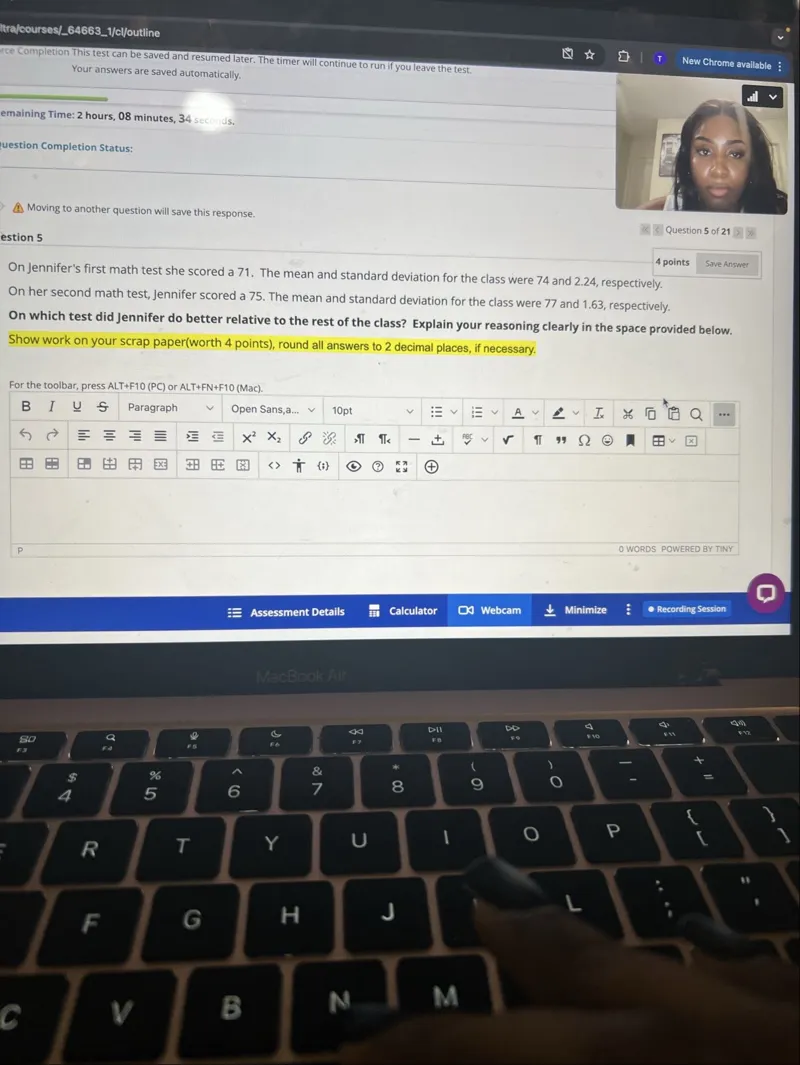Questions: On Jennifer's first math test she scored a 71. The mean and standard deviation for the class were 74 and 2.24, respectively. On her second math test, Jennifer scored a 75. The mean and standard deviation for the class were 77 and 1.63, respectively. On which test did Jennifer do better relative to the rest of the class? Explain your reasoning clearly in the space provided below. Show work on your scrap paper(worth 4 points), round all answers to 2 decimal places, if necessary.

Transcript text: On Jennifer's first math test she scored a 71. The mean and standard deviation for the class were 74 and 2.24, respectively.
On her second math test, Jennifer scored a 75. The mean and standard deviation for the class were 77 and 1.63, respectively.
On which test did Jennifer do better relative to the rest of the class? Explain your reasoning clearly in the space provided below.
Show work on your scrap paper(worth 4 points), round all answers to 2 decimal places, if necessary.





